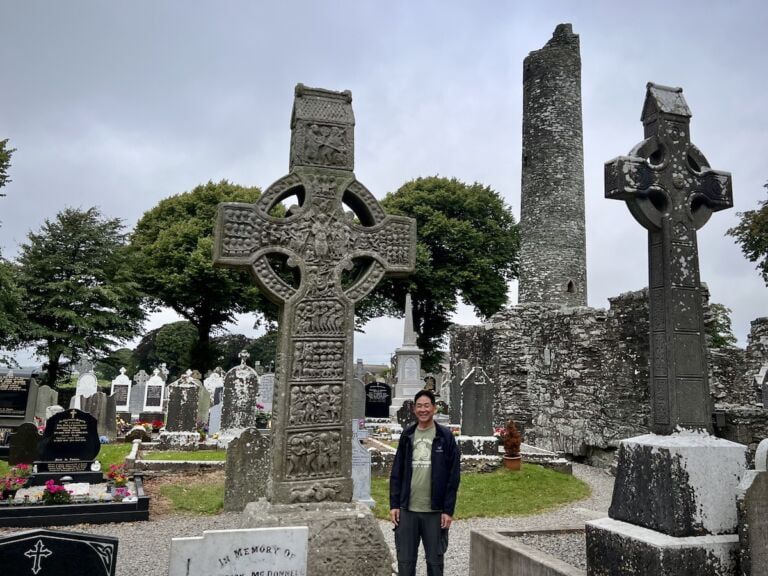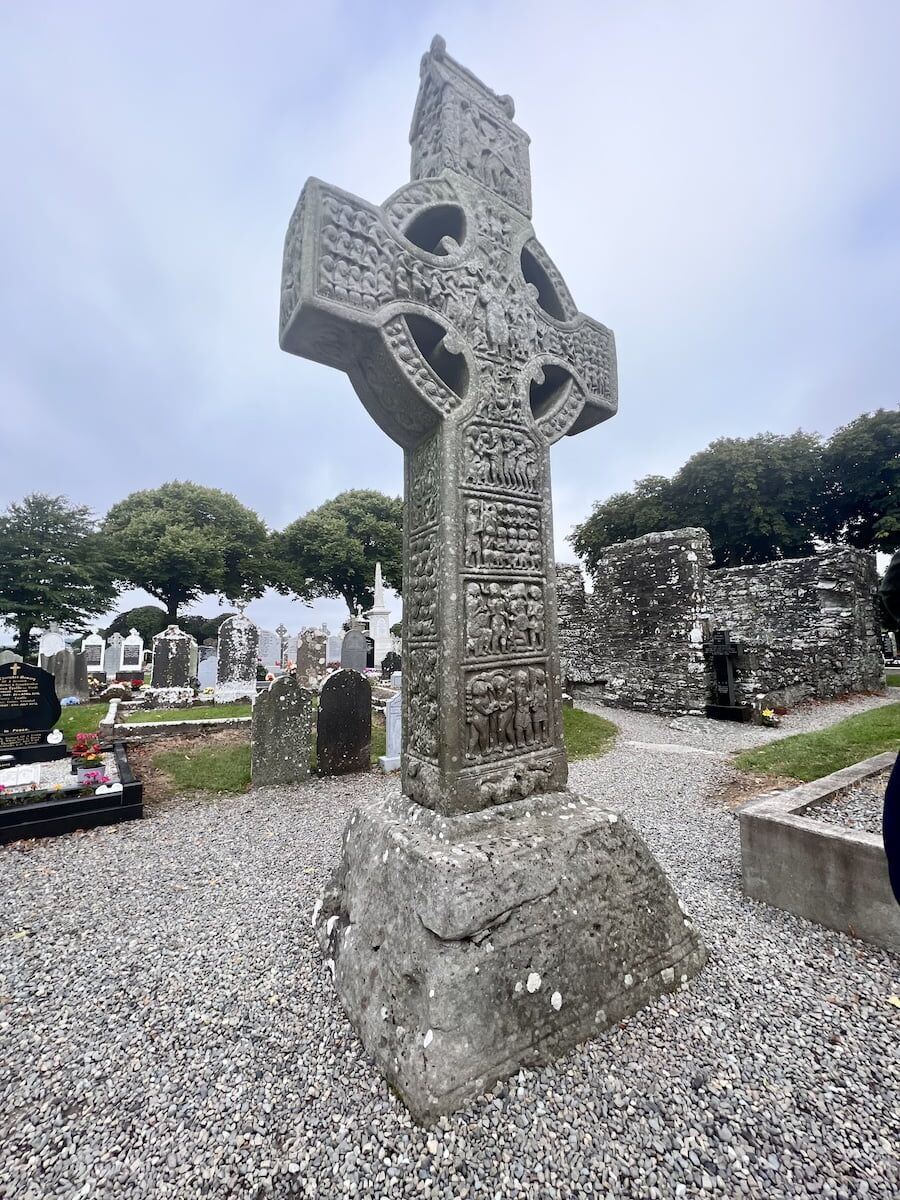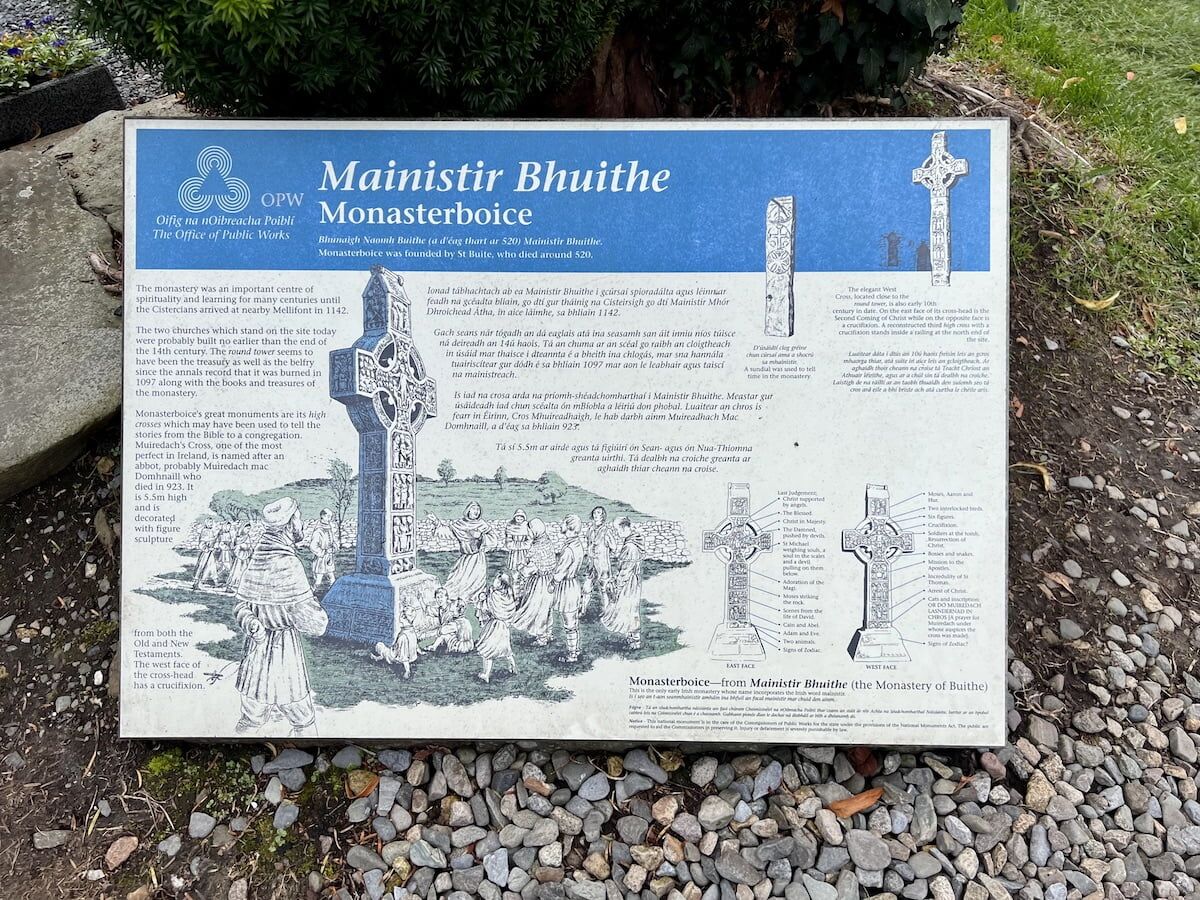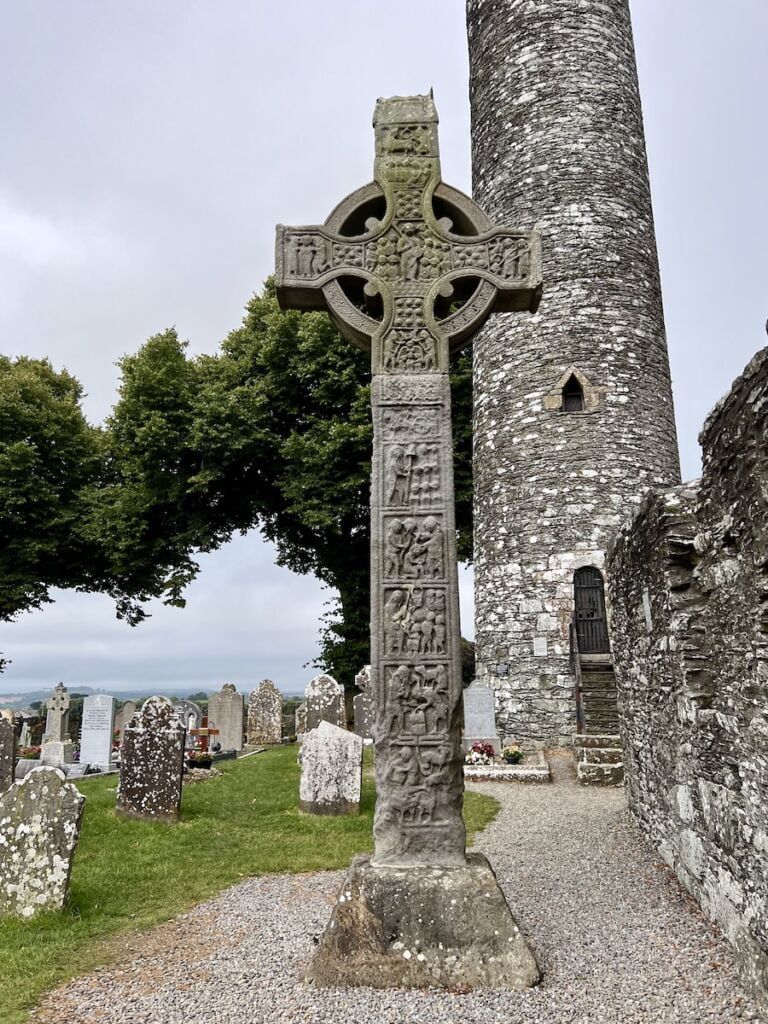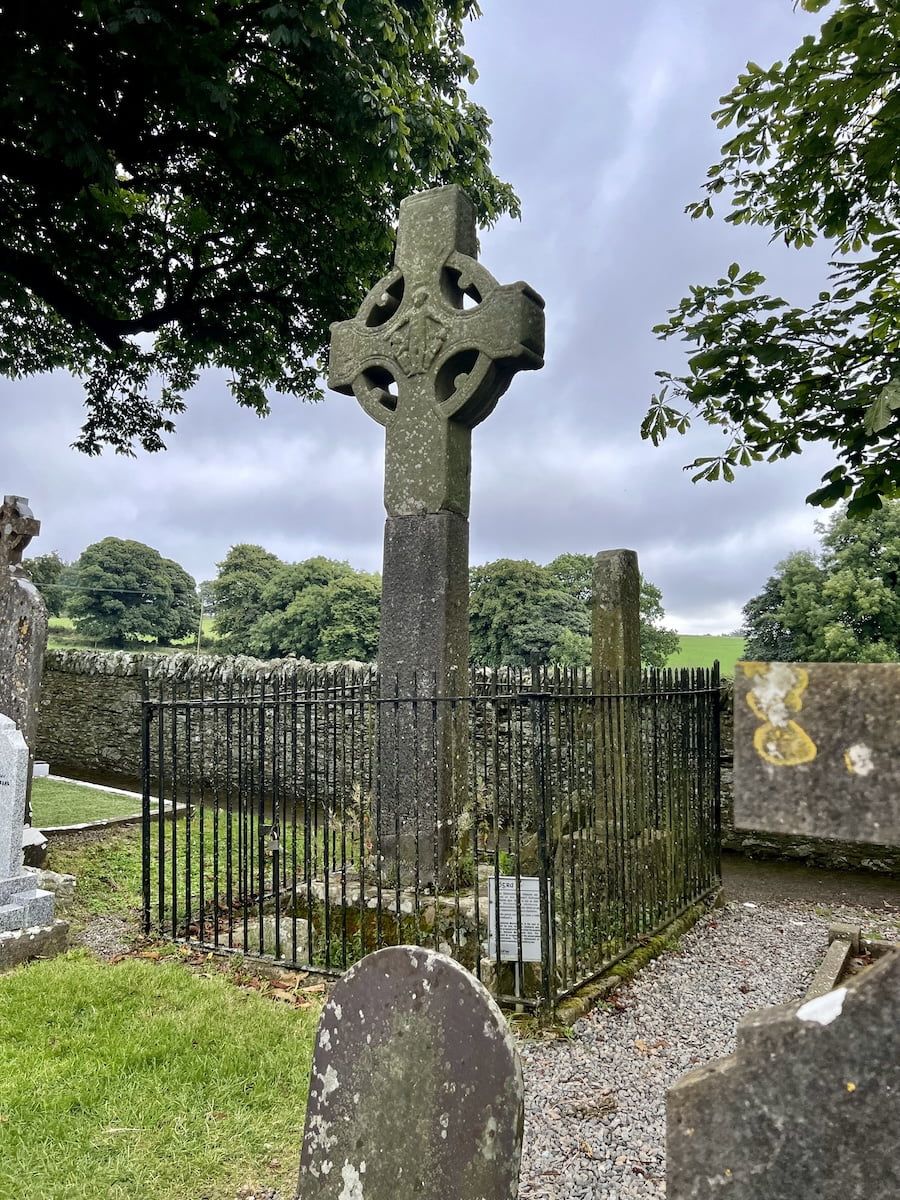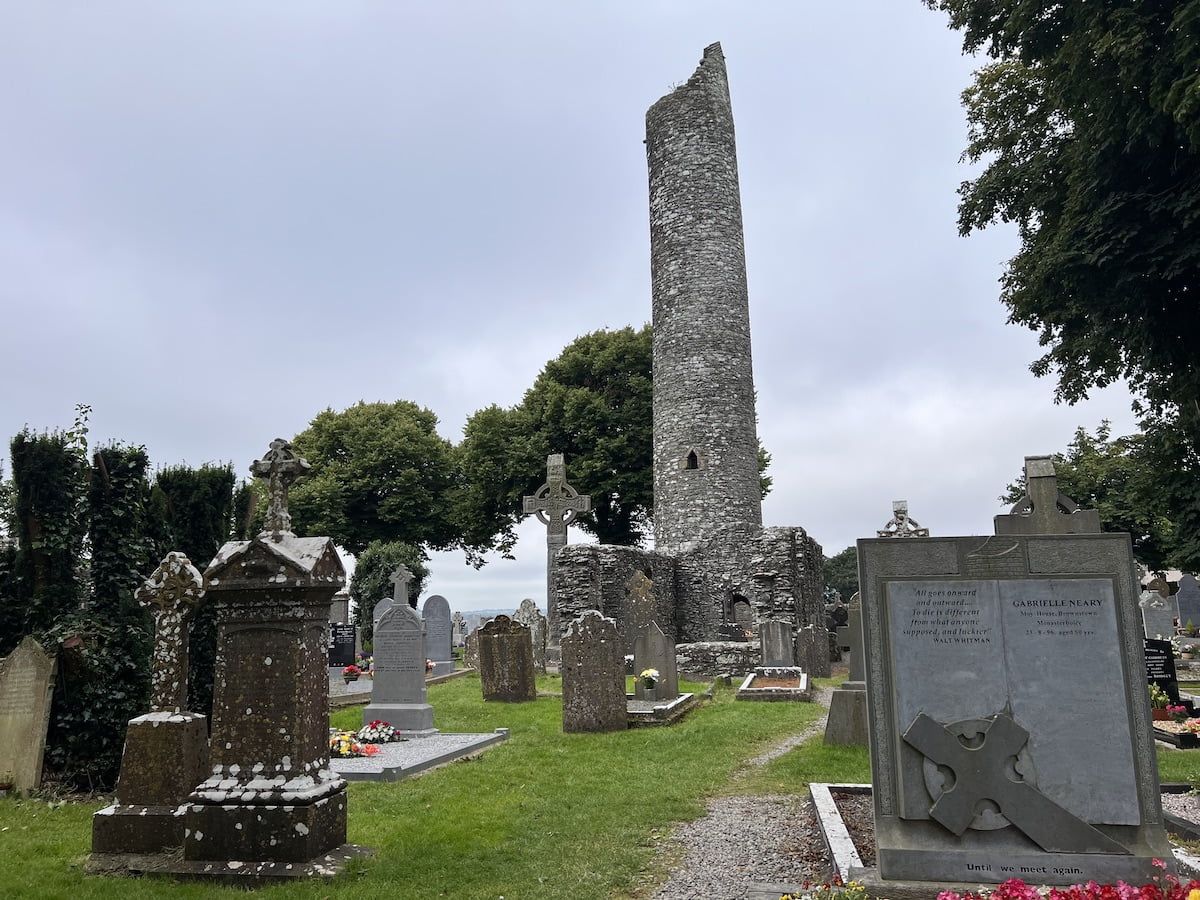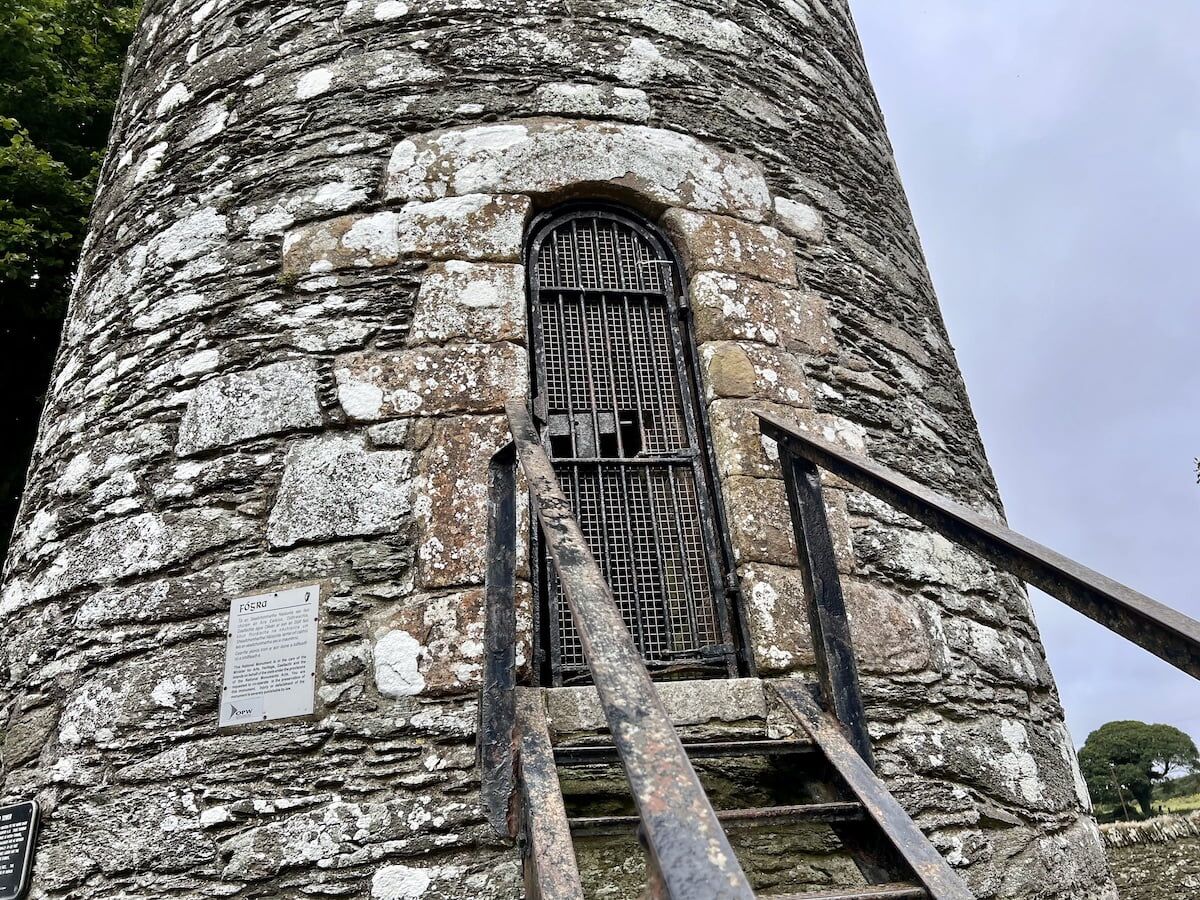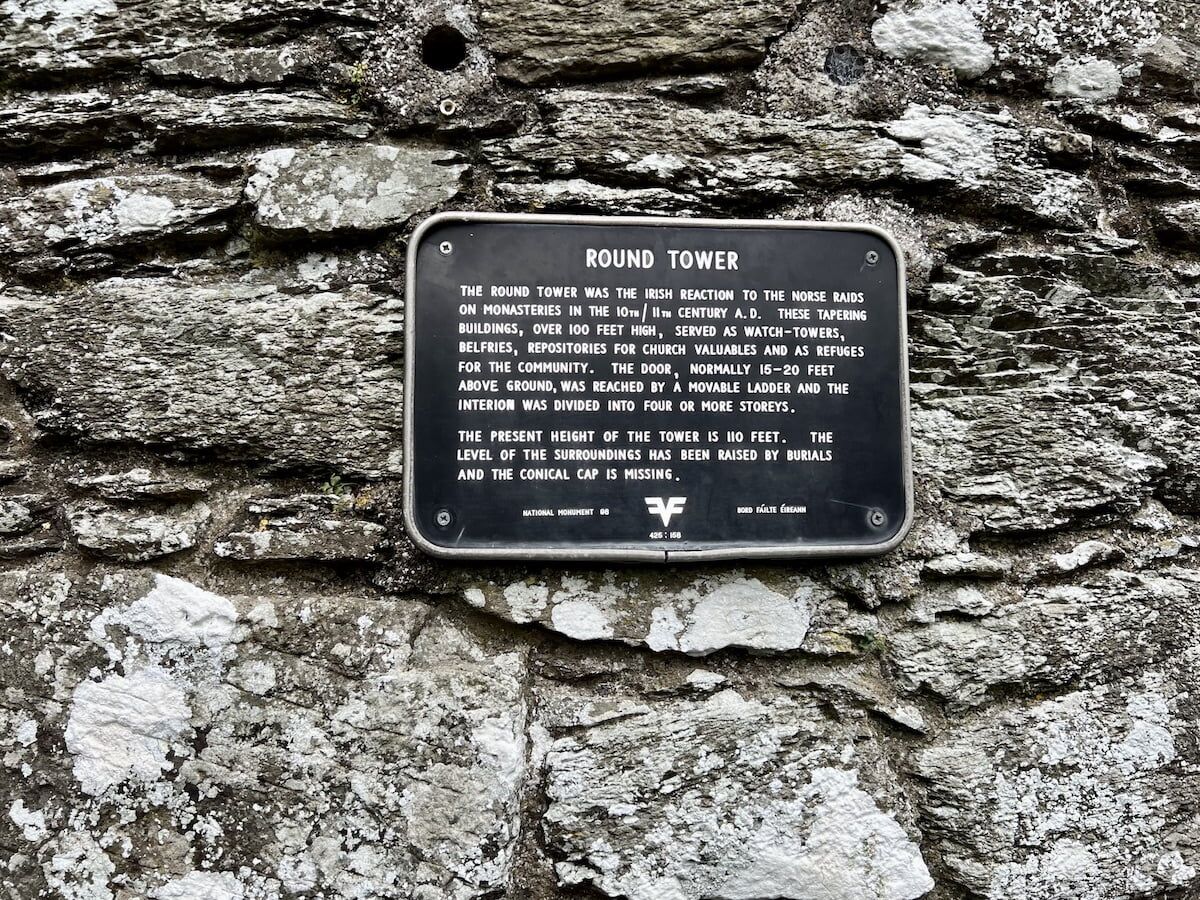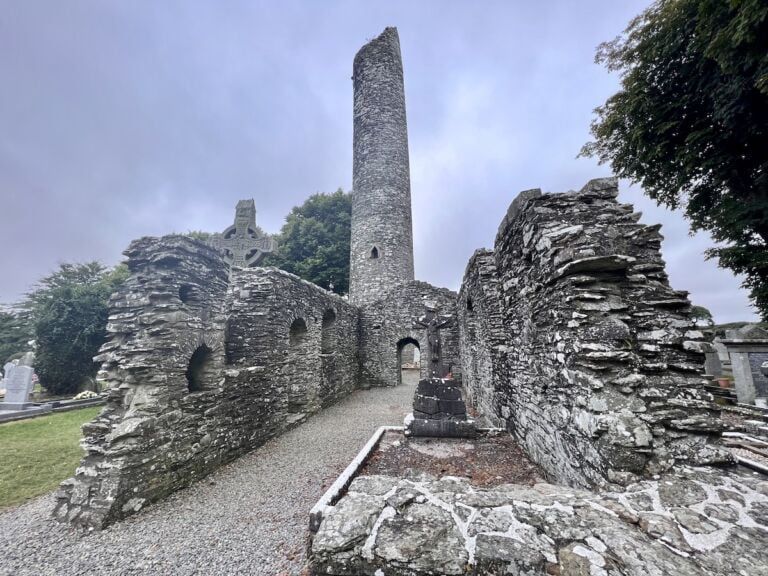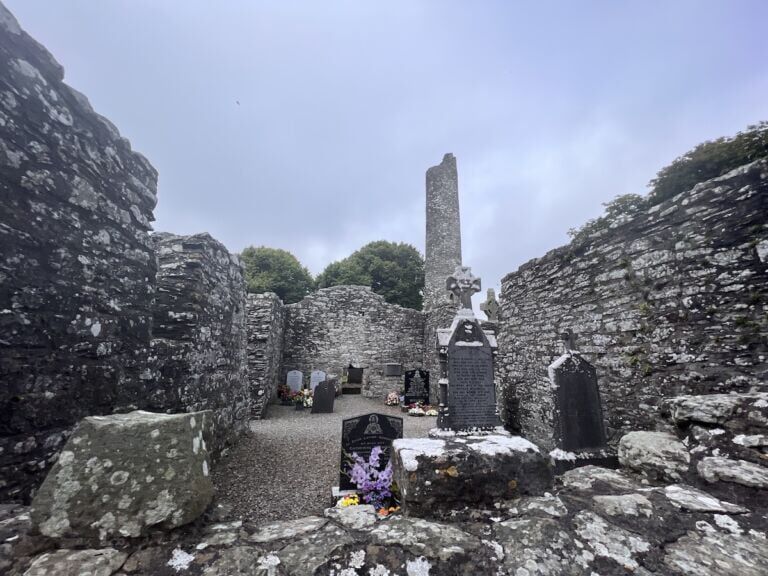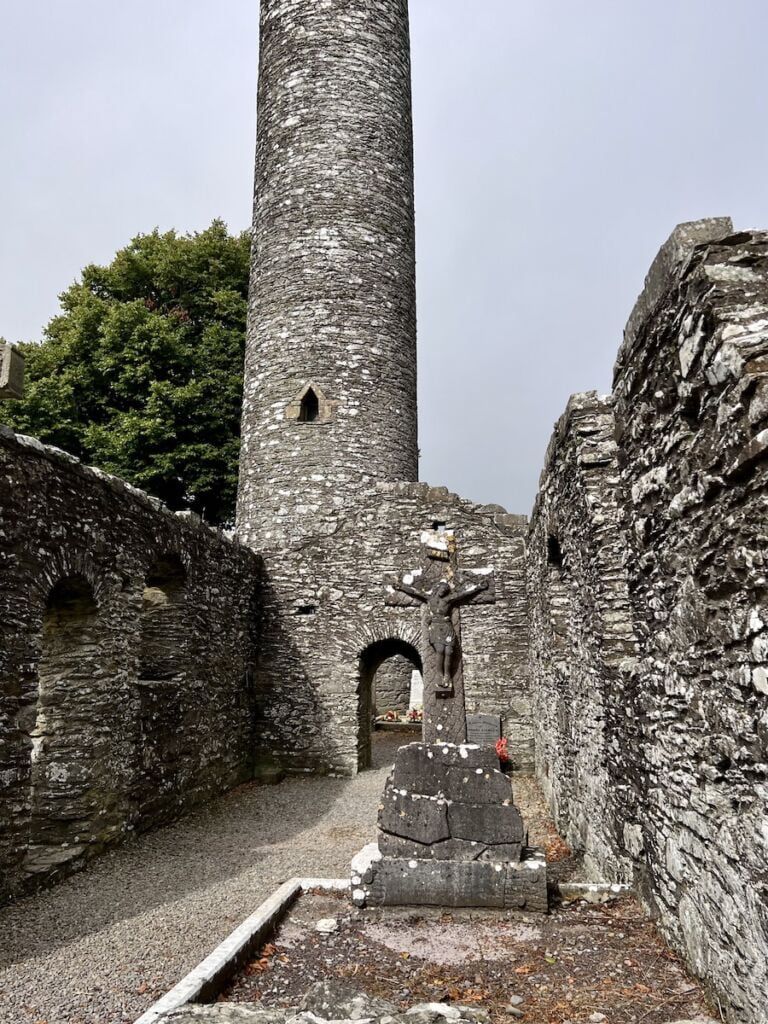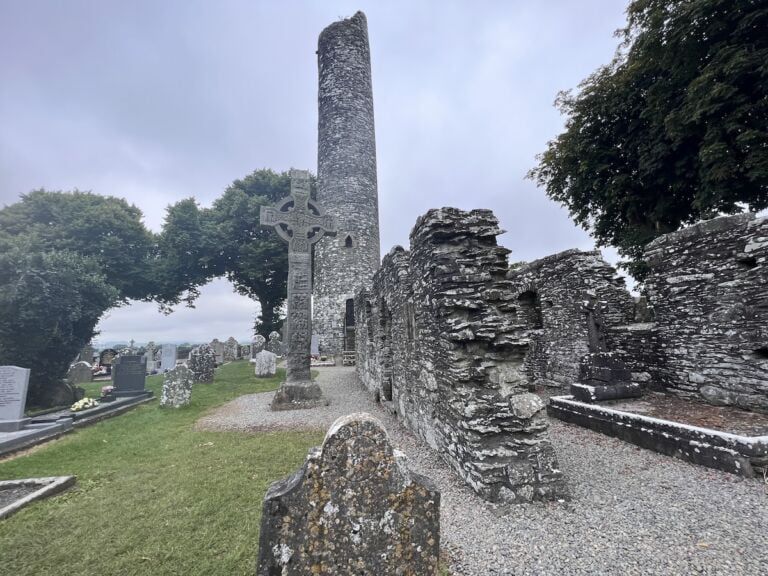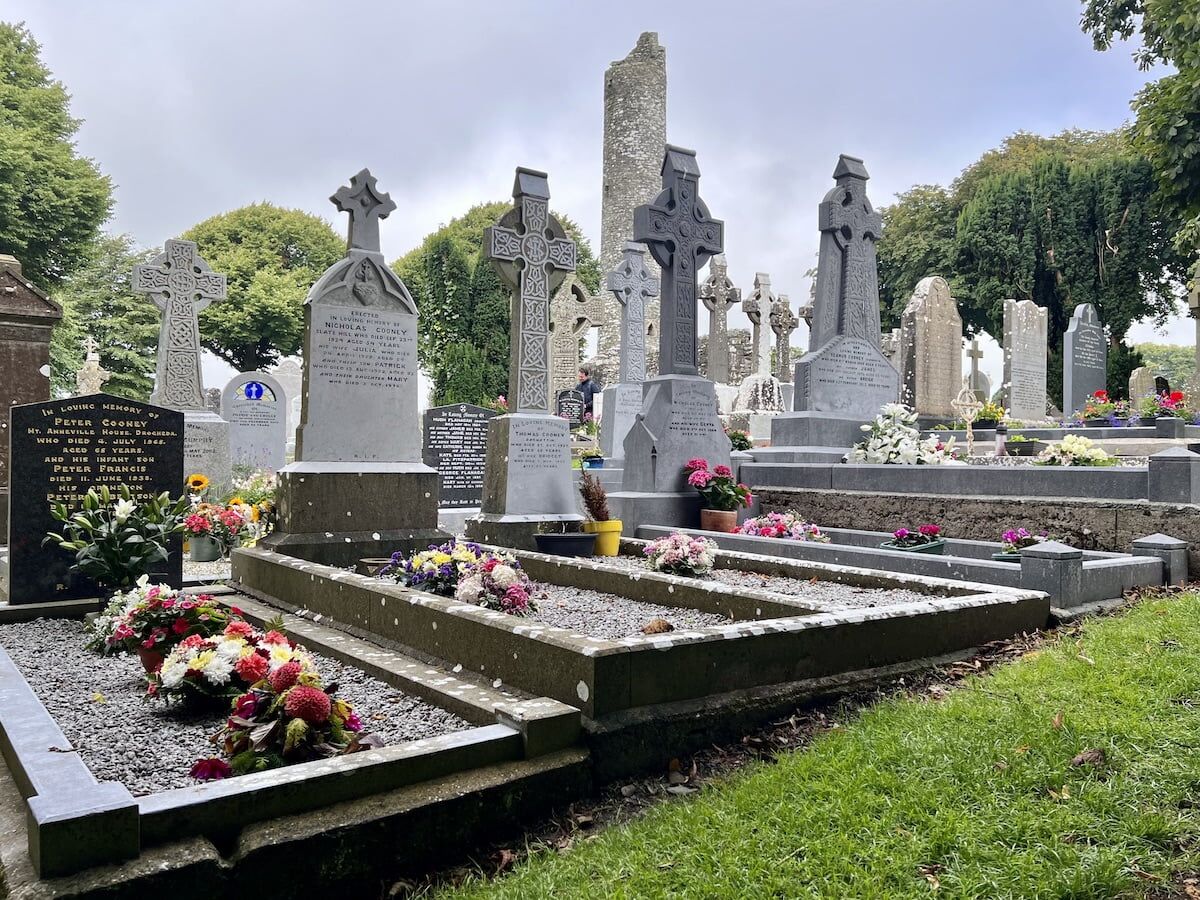3 Iconic Monasterboice High Crosses
Monasterboice, or “Mainistir Bhuithe” in Irish (Monastery Bhuithe), build in the 5th century, is associated with St. Buithe, the site’s founder. The high crosses and tower were added in the 9th and 10th centuries. This is one my favorite sites for the West Cross is the tallest high cross in Ireland.
No tickets are necessary. Just park in the designated parking lot, hide your valuables, and its a short walk to the Monasterboice monastary.
The sign reads:
MAINISTIR BHUITE, MONASTERBOICE
“Monastery founded by St. Buite, who died in AD 521.
No building of so early a date survives here. The oldest monuments are the three high crosses and the round tower, all dating from the 10th century. The crosses belong to the scriptural group, so called because of the biblical scenes they depict. The round tower, which must have been erected shortly after 968, was damaged by fire in 1098.
Beyond a list of abbots (759-1122) little is known of the story of this monastery. There are no records of viking forays, though the vikings occupied the place for some time before they were driven out of tit with great slaughter in 968.
With the foundation of the Great Cistercian Abbey at Mellifont in 1142, Monasterboice fell into decay. The site was occupied by a parochial church in the 13th century.”
Wed, Aug 9: Louth, Ireland
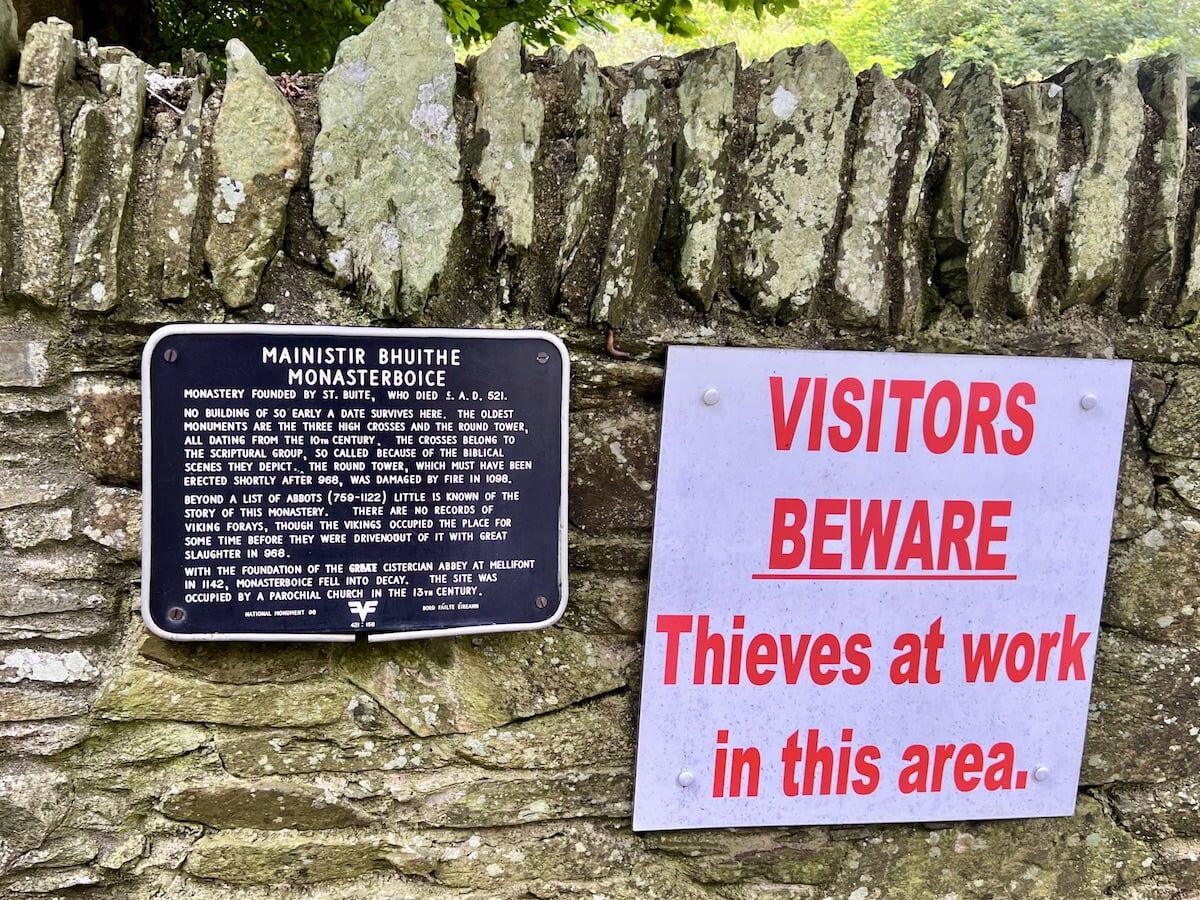
Monasterboice High Crosses Tour
The three high crosses at Monasterboice are among the most famous and intricately carved crosses in the country. Each of the crosses have their own story and context in history. The three high crosses are:
The West Cross (or Tall Cross)
It’s the tallest of the three crosses, with some weathering of the carvings. Standing at around 7 meters (23 ft), the West Cross is the tallest high cross in Ireland. There may or may not be someone buried under the cross, as high crosses are not always grave markers.
The Cross of Muiredach
The carvings are particularly detailed depicting a range of biblical scenes: the Last Jugdement, the Crucifixion, and Adam and Eve. The base of the cross has an inscription: “OR DO MUIREDACH LAS NDERNAD IN CHROS” which translates to “A prayer for Muiredach for whom the cross was made”.
The North Cross
The oldest of the three high crosses at Monasterboice, and also the most worn. A small fence protects the cross from damage.

Visiting the Monasterboice Round Tower
Towering above the Monasterboice landscape, the Round Tower stands about 35 meters (115 ft) tall. The Round Tower was a bell tower for the church.
The doorway to the tower is elevated a few meters to help with defense from attackers – by pulling up the ladder, and also to protect from flooding.
The conical cap is missing from the top of the Round Tower. The tower is not open to the public for safety and preservation reasons.
The sign reads:
ROUND TOWER
The Round Tower was the Irish reaction to the Norse raids on monasteries in the 10th / 11th century A.D. These tapering buildings, over 100 feet high, served as watch-towers, belfries, repositories for church valuables, and as refuges for the community. The door, normally 15-20 feet above ground, was reached by a moveable ladder and the interior was divided into four or more stories.
The present height of the tower is 110 feet. The level of the surroundings has been raised by burials and the conical cap is missing.
“The crosses of Monasterboice are not just stone; they are stories, legacies, and timeless expressions of faith.”
Anonymous
A closer look at Monasterboice Main Church Ruins
After you’re done admiring the iconic high crosses and round tower at Monasterboice, have a look at the Main Church (or Great Church) ruins. Early Christian churches like this one, have two primary rooms, the “chancel” and the “nave”.
Chancel: This is the more sacred room, typically used for religious ceremonies. There is a grave slab here featuring the crucifixion of Christ. The chancel arch separates the chancel from the nave.
Nave: This is where the congregation gathers, the main room or communal space where services are performed. There are a bunch of graves in this room.
Here are some Monasterboice Main Church photos:

Can I get buried at Monasterboice?
Many individuals have plots in the graveyard due to historical family ties. If your ancestors are buried there, you might have a chance to join them. There’s quite a mix of newer and older graves there. Here’s a couple of photos of the graves:
Monasterboice High Crosses Review
Monasterboice was suggested by the ToursByLocals tour guide, and I’m happy to report that it was a winner. I like older, stone ruins, and not too crowded with (alive) people. The high crosses themselves are large and spectacular. I’ve never seen anything like it.
The Church ruins and Round Tower add to the graveyard ambiance. The only thing missing was some way to enter the Round Tower and see what’s inside. Nonetheless, I’d recommend visiting Monasterboice High Crosses if you get the opportunity.
Now check out my other favorite Irish site to visit: Kinbane Castle on the Antrim Coast.
If you want to head over there, here’s google maps for Monasterboice High Crosses.
What are your thoughts about the Monasterboice High Crosses? Let us know in the comments below.
Part of the ToursByLocals Ancient Ireland Tour

